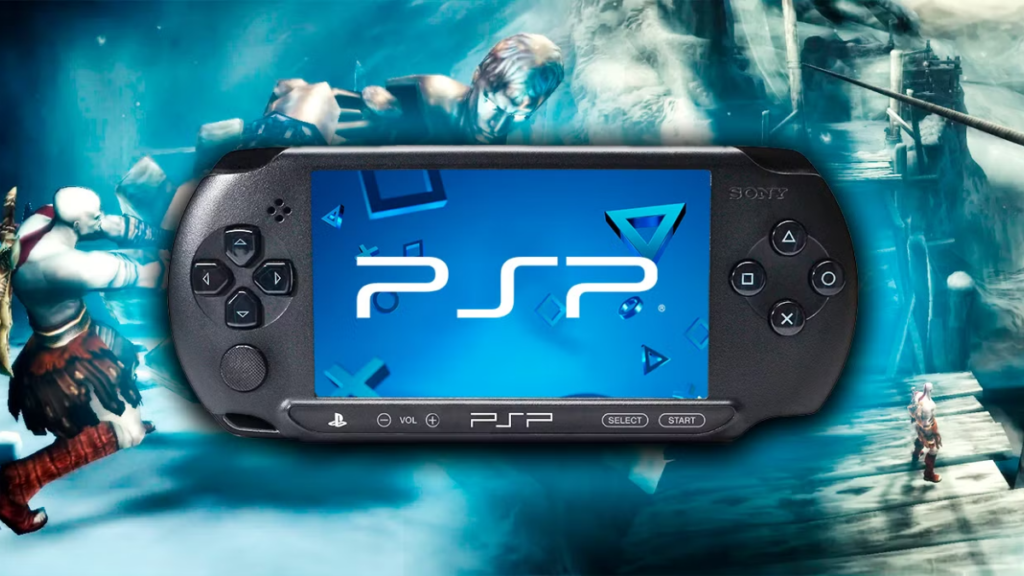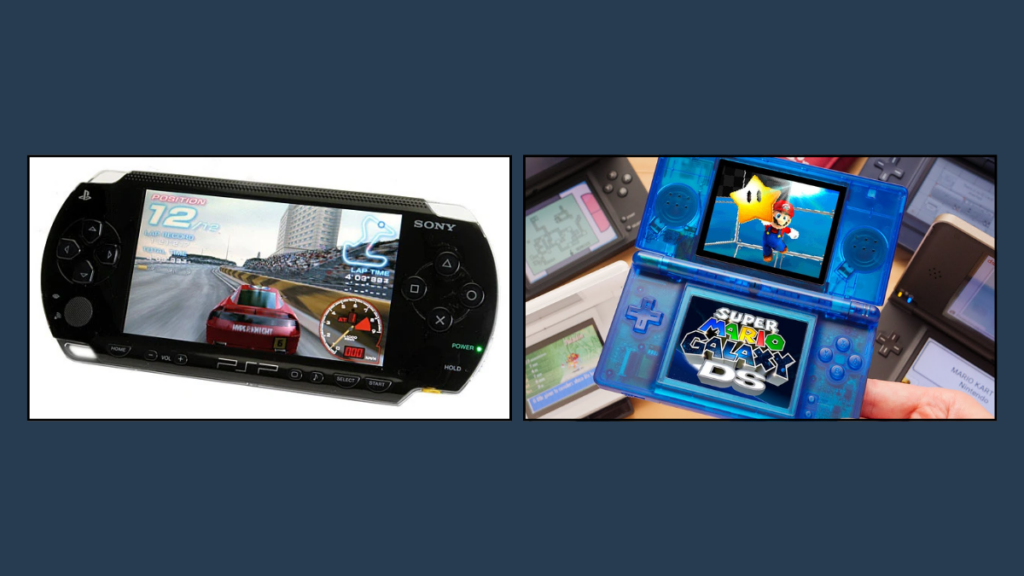The early 2000s saw one of the most heated battles in gaming history: Sony’s PlayStation Portable (PSP) vs. Nintendo’s DS (Dual Screen). Both handheld consoles launched in the same era but took vastly different approaches, resulting in one of the most memorable rivalries in the gaming industry. While the DS ultimately outsold the PSP, Sony’s handheld left a lasting impact with its cutting-edge technology and multimedia capabilities. Let’s break down this legendary console war.
Round 1: Hardware and Design
PlayStation Portable (PSP)
- Graphics: Near-PS2-level visuals, making it the most powerful handheld of its time.
- Screen: A 4.3-inch widescreen LCD, offering a cinematic experience.
- Media Format: Used UMDs (Universal Media Discs) for games and movies.
- Multimedia Capabilities: Supported music, movies, and internet browsing.
- Models: PSP-1000, PSP-2000, PSP-3000, PSP Go, and PSP Street.

Nintendo DS
- Graphics: Less powerful than the PSP but focused on gameplay innovation.
- Dual-Screen Setup: Included a touchscreen on the bottom for new gameplay mechanics.
- Media Format: Used cartridges instead of discs.
- Backward Compatibility: Could play Game Boy Advance (GBA) games.
- Models: DS, DS Lite, DSi, and DSi XL.

Round 2: Game Library
PSP’s Strengths
Sony positioned the PSP as a console-like experience on the go. It featured:
- Blockbuster titles like ‘God of War: Chains of Olympus’, ‘Metal Gear Solid: Peace Walker’, and ‘Grand Theft Auto: Liberty City Stories’.
- A strong library of RPGs, including ‘Final Fantasy Tactics: The War of the Lions’ and ‘Persona 3 Portable’.
- Third-party support, allowing major developers to release hit franchises on the PSP.
Nintendo DS’s Strengths
Nintendo focused on accessibility and innovation, leading to:
- Casual-friendly hits like ‘Brain Age’, ‘Nintendogs’, and ‘Animal Crossing: Wild World’.
- Touchscreen-based gameplay with games like ‘The Legend of Zelda: Phantom Hourglass’ and ‘Elite Beat Agents’.
- Massive Pokémon success, with titles like ‘Diamond & Pearl’ driving sales.
Round 3: Sales and Popularity
Despite the PSP’s superior hardware and multimedia capabilities, the DS dominated in sales:
- Nintendo DS Sales: Over 154 million units sold, making it the best-selling handheld ever.
- PSP Sales: Around 80 million units, still a major success but far behind the DS.
The DS’s affordability, innovative design, and appeal to casual gamers helped it outsell the PSP. However, Sony’s handheld remained popular among core gamers who wanted a high-powered, multimedia-focused experience.
Round 4: Legacy and Impact
PSP’s Legacy
- Introduced console-quality gaming on a handheld.
- Pioneered digital distribution with the PSP Go’s all-digital approach.
- Built a strong homebrew and modding community, keeping it relevant today.
Nintendo DS’s Legacy
- Expanded gaming beyond traditional audiences, attracting non-gamers.
- Paved the way for touchscreen gaming, which later influenced smartphones.
- Set the foundation for the 3DS, which continued its success.
Final Verdict: Who Won?
In terms of sales and mainstream success, the Nintendo DS was the clear winner. Its accessibility, innovative gameplay, and mass appeal allowed it to reach a broader audience. However, the PSP remains a fan-favourite among hardcore gamers, offering a more advanced gaming experience and a lasting impact on handheld gaming technology.
Even today, both consoles hold a special place in gaming history. Whether you were team PSP or DS, there’s no denying that this rivalry defined an era of handheld gaming.
Which side were you on? Let us know!
Also Read: Venturing Into The Realm of Role-Playing Games (RPGs)
–Silviya.Y
